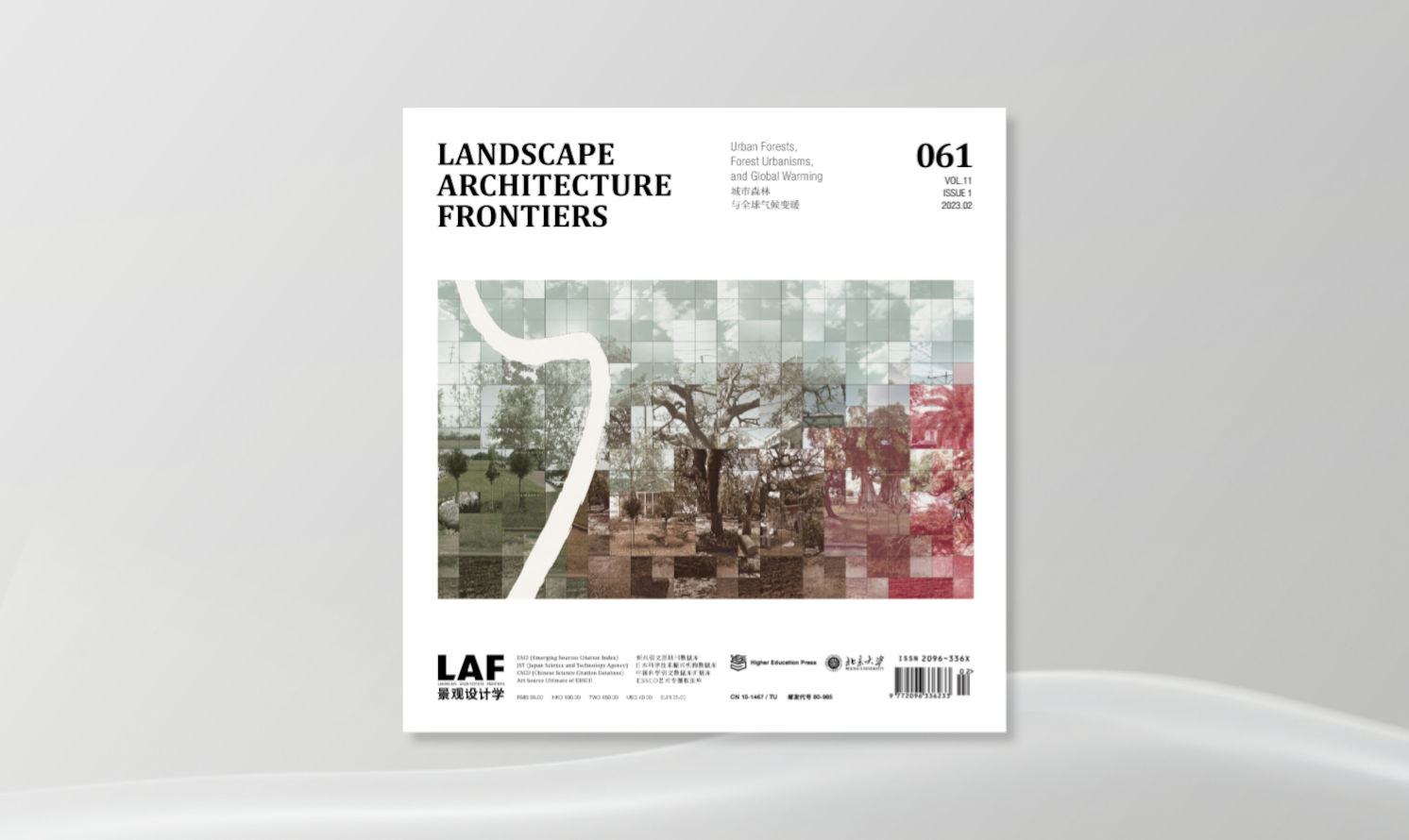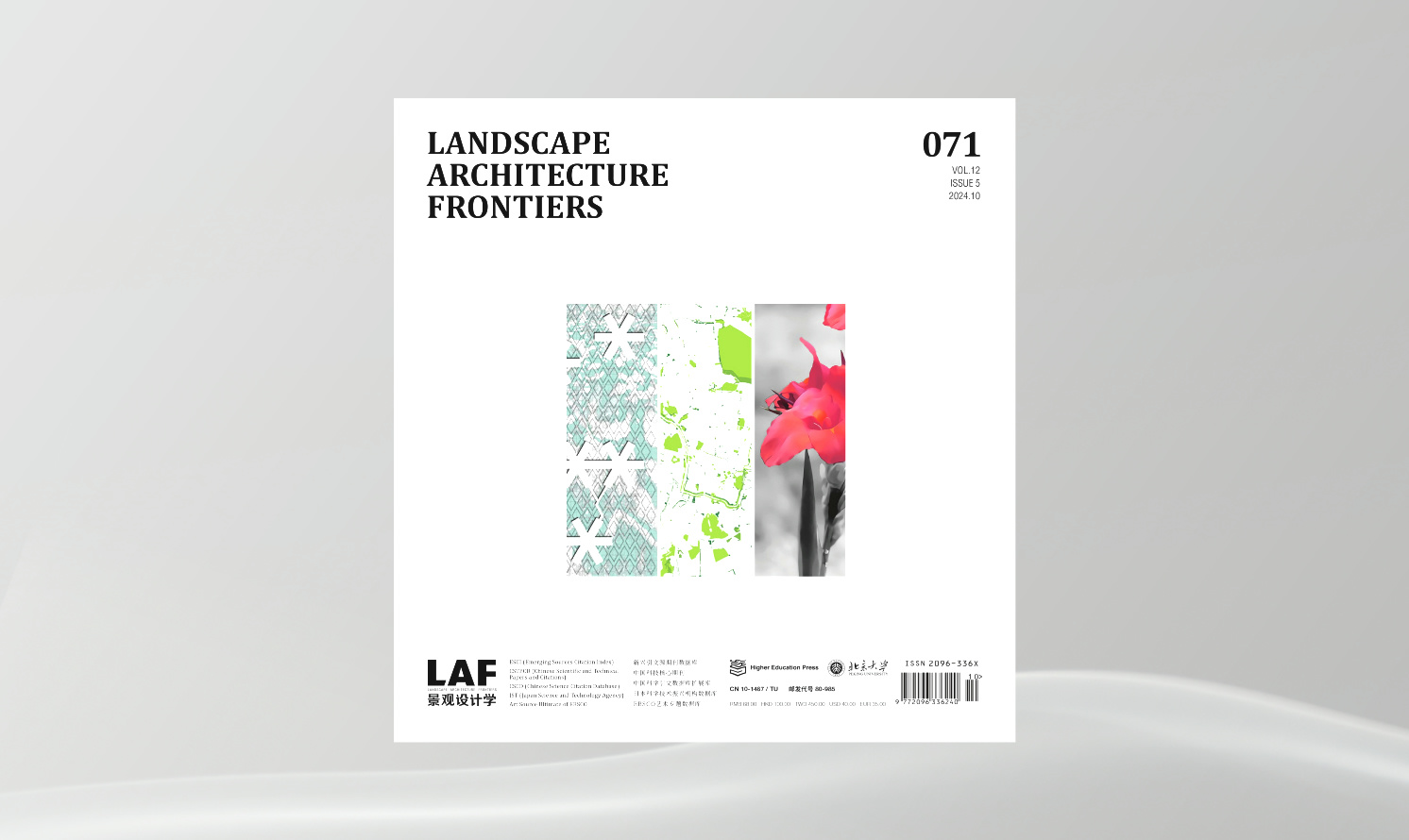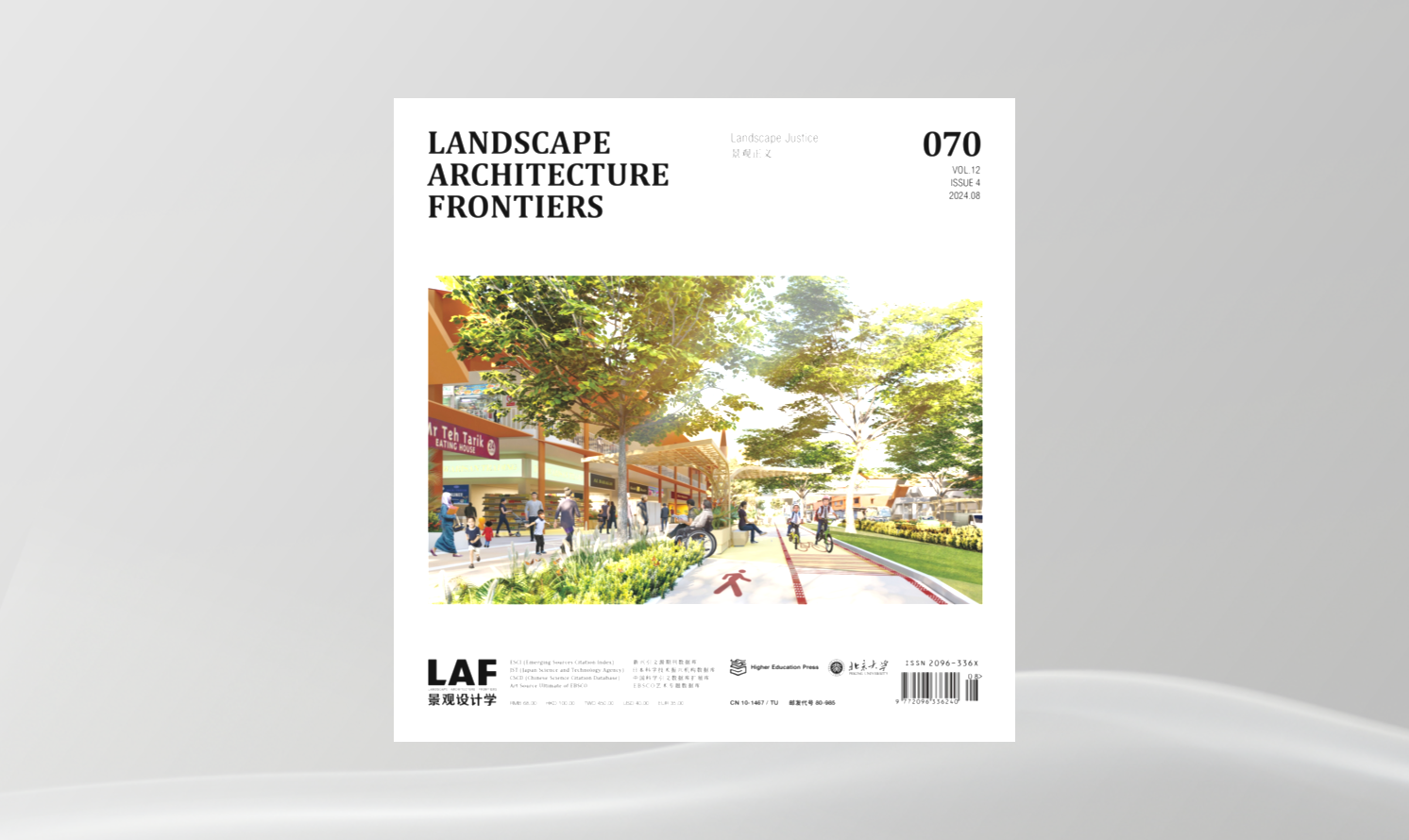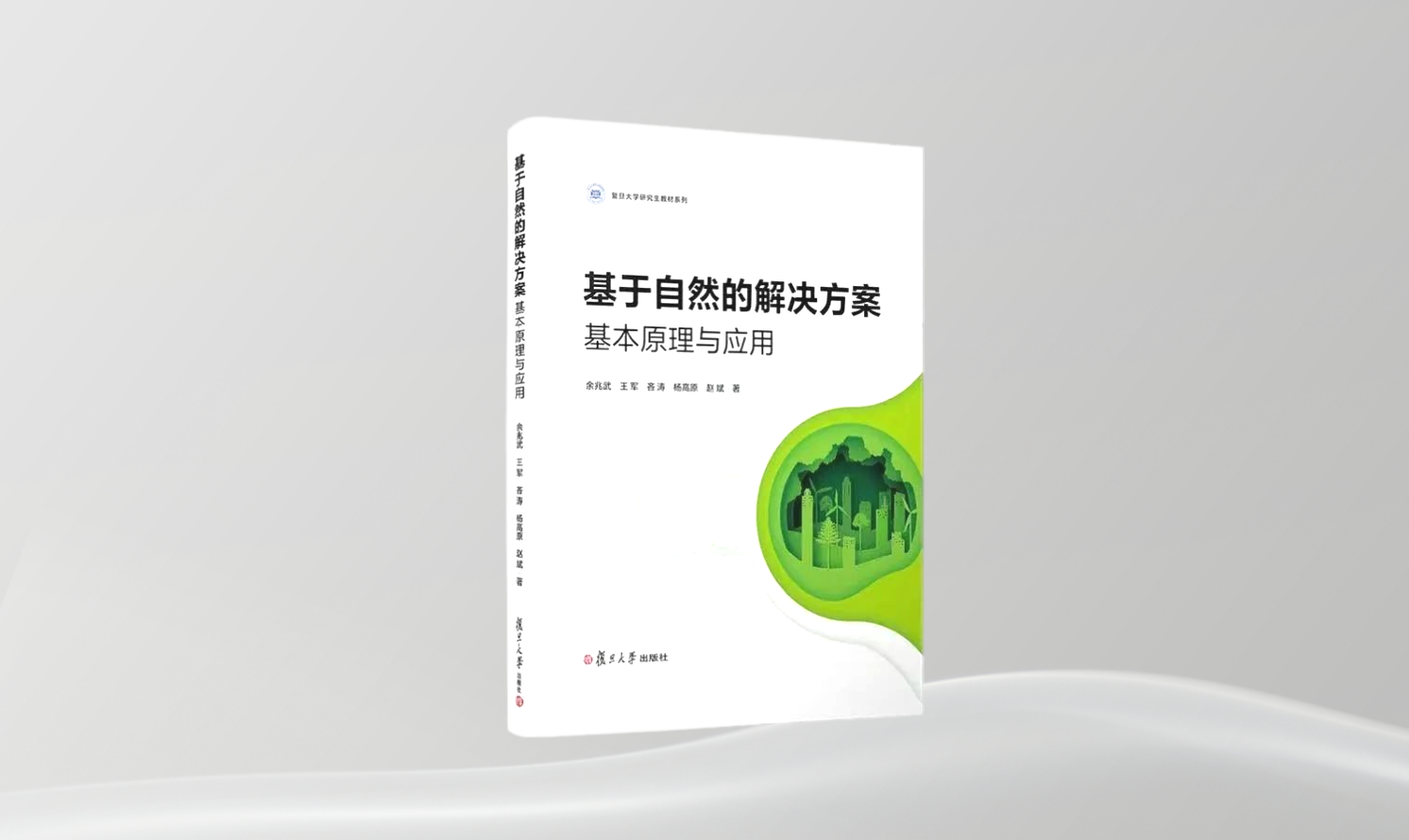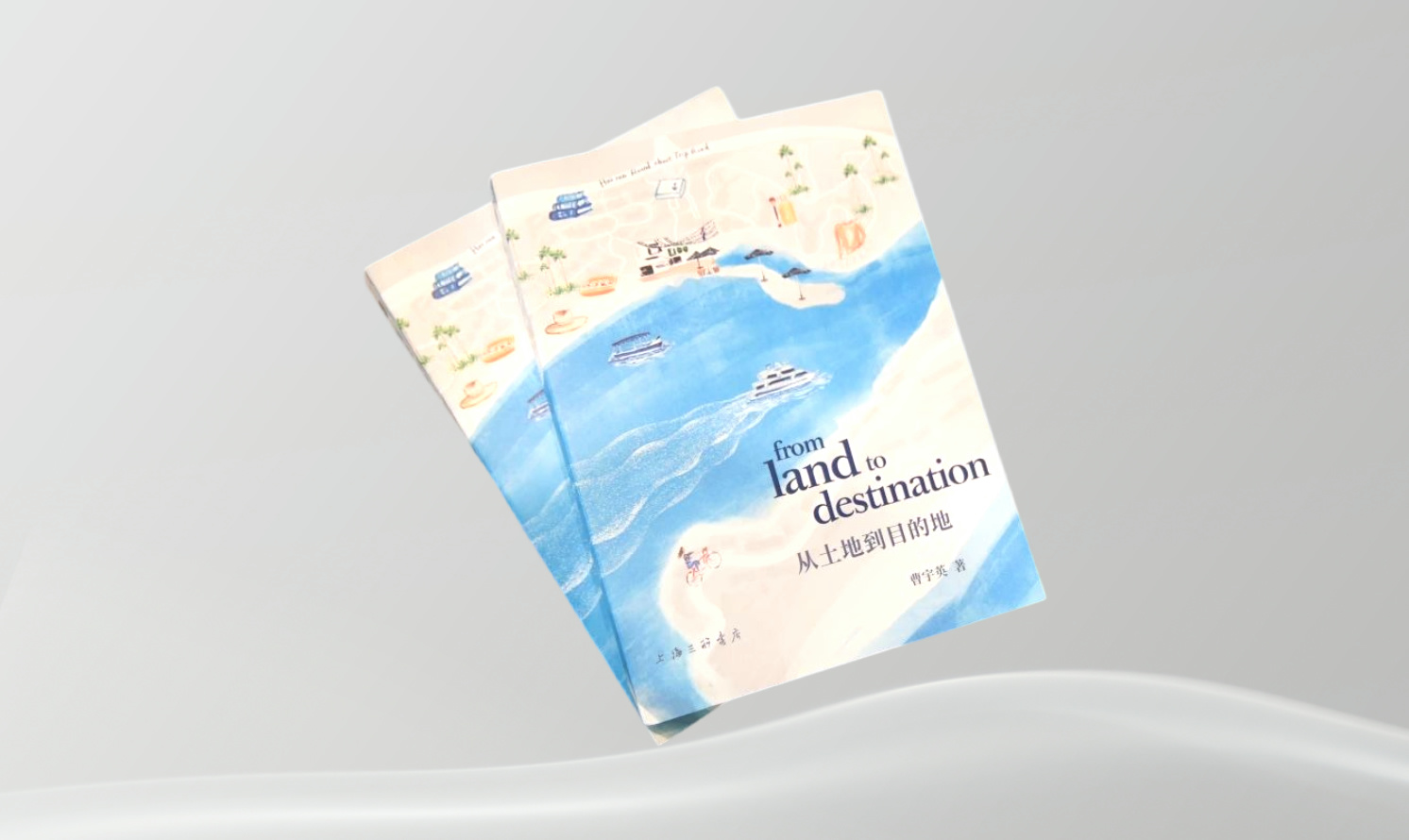城市森林的復(fù)合結(jié)構(gòu)與功能
Compound Structures and Functions of Urban Forests
作者:李博 Bo LI
摘要
城市森林作為森林都市主義的核心概念,對(duì)城市的可持續(xù)發(fā)展有重要價(jià)值�。城市森林是城市復(fù)合生態(tài)系統(tǒng)中一個(gè)不可或缺的子系統(tǒng),它和城市水系等其他子系統(tǒng)之間存在共生演進(jìn)的關(guān)系���,也是中國城市實(shí)現(xiàn)“雙碳”目標(biāo)的景觀要素����。本文提出����,可以從三個(gè)方面改善城市森林的復(fù)合結(jié)構(gòu)和功能:首先,從城市森林到森林城市���,系統(tǒng)拓展城市森林的類型和結(jié)構(gòu)����;其次�����,從建設(shè)森林到融合森林,注重提升城市森林的復(fù)合生態(tài)功能���;最后����,從森林生態(tài)系統(tǒng)到城市生態(tài)系統(tǒng)���,統(tǒng)籌城市森林與其他類型生態(tài)系統(tǒng)的協(xié)同建設(shè)����。
關(guān)鍵詞
城市森林����;森林都市主義����;城市復(fù)合生態(tài)系統(tǒng);生態(tài)系統(tǒng)服務(wù)�;綠色基礎(chǔ)設(shè)施;城市可持續(xù)發(fā)展
Abstract
As the core concept of forest urbanism, urban forest is of great importance for a city’s sustainable development. It is a vital subsystem of urban compound ecosystem and evolve synergistically with other subsystems, as well as a significant landscape component to push forward realizing carbon peaking and carbon neutrality. This article proposes three approaches to improving the compound structures and functions of urban forests. First, enrich types and extend structures of urban forests to build forest cities. Second, move from constructing forests in the city towards integrating forests into the city to enhance compound ecological functions. Third, shift focus from forest ecosystems to urban ecosystems by a synergic construction of the urban forest and other types of ecosystems.
Keywords
Urban Forestry; Forest Urbanism; Urban Compound Ecosystems; Ecosystem Services; Green Infrastructure; Sustainable Urban Development
森林的掠取與保育——印度阿拉瓦利山的社會(huì)-生態(tài)變化
The Taking and Making of a Forest—Socio-Ecological Transformations of the Aravalli Hills, India
作者:謝巴·阿米爾�����,凱利·香農(nóng) Sheeba AMIR, Kelly SHANNON
摘要
本文認(rèn)為,印度所沿襲的殖民時(shí)期土地利用分類系統(tǒng)——將阿拉瓦利山及其在德里和古爾岡近郊的森林系統(tǒng)劃分為“荒地”的做法�,貶損了森林對(duì)區(qū)域景觀的社會(huì)-生態(tài)貢獻(xiàn)。隨著時(shí)間的推移����,土地利用分類導(dǎo)致了“荒地”向生態(tài)敏感性較差的“生產(chǎn)性”用地的轉(zhuǎn)化。本文批判性地回顧了阿拉瓦利山在殖民時(shí)期和獨(dú)立后����,在土地管理政策上持續(xù)的社會(huì)-生態(tài)轉(zhuǎn)型,以及一系列與森林相關(guān)的社會(huì)-環(huán)境轉(zhuǎn)型事件����。研究基于景觀和城市規(guī)劃,以及社會(huì)科學(xué)和環(huán)境科學(xué)的視角�����,運(yùn)用了不同學(xué)科的知識(shí)來解讀城市環(huán)境��。本文有助于提升人們對(duì)印度“荒地”森林的社會(huì)-生態(tài)價(jià)值的了解和認(rèn)識(shí)����,并激發(fā)我們討論其在不斷轉(zhuǎn)型的城市景觀中的未來可能性。印度阿拉瓦利山的案例研究將為其他同樣因城市發(fā)展而受到威脅的自然資源——特別是森林——提供寶貴的經(jīng)驗(yàn)�����。
關(guān)鍵詞
荒地;神圣森林����;土地利用分類;社會(huì)-生態(tài)轉(zhuǎn)型���;公地����;森林管理�����;德里-古爾岡�����;印度
ABSTRACT
The paper argues that “wasteland” as a colonial land-use classification of India’s Aravalli Hills and its forest system in peri-urban Delhi and Gurgaon dilutes their socio-ecological contributions to the regional landscape. Over time, the land-use designation has become a means to convert “wastelands” to ecologically insensitive “productive” use. The paper critically describes successive socio-ecological transformations of the Aravalli Hills with respect to colonial and post-independence land management policies and various episodes of socio-environmental transformations, with a focus on its forests. The research applies learnings from various disciplines towards understanding urban environments and engages the lenses of landscape and urban planning, as well as social and environmental sciences. The paper contributes to building knowledge and recognition of the socio-ecological values of forest “wastelands” in India and broadens the discussion on their future within a transforming urban landscape. The case study provides invaluable lessons for other contexts where the natural resources, particularly forests, are threatened by development.
KEYWORDS
Wastelands; Sacred Forest; Land-use Classification; Socio-Ecological Transformation; Commons; Forest Management; Delhi-Gurgaon; India
中國長株潭城市群綠色基礎(chǔ)設(shè)施對(duì)步行體力活動(dòng)的影響機(jī)制研究
Research of the Influence Mechanisms of Green Infrastructure on Walking Physical Activities in Changsha–Zhuzhou–Xiangtan Urban Agglomeration, China
作者:李博���,歐陽浩,劉秋宏 Bo LI, Hao OUYANG, Qiuhong LIU
摘要
步行體力活動(dòng)可以改善居民健康�����,探索綠色基礎(chǔ)設(shè)施對(duì)步行體力活動(dòng)的影響機(jī)制是建設(shè)健康城市環(huán)境的重要一環(huán)。本文以中國長株潭城市群綠色基礎(chǔ)設(shè)施與居民步行體力活動(dòng)的頻率和強(qiáng)度為研究對(duì)象��,通過識(shí)別城市群綠色基礎(chǔ)設(shè)施的構(gòu)成要素�,分析步行體力活動(dòng)的空間分布特征;進(jìn)而構(gòu)建城市群綠色基礎(chǔ)設(shè)施指標(biāo)體系��,運(yùn)用多元線性回歸模型分析城市群綠色基礎(chǔ)設(shè)施對(duì)居民步行體力活動(dòng)頻率和強(qiáng)度的影響機(jī)制��。研究發(fā)現(xiàn)�,長株潭城市群居民的步行體力活動(dòng)軌跡主要分布在綠色基礎(chǔ)設(shè)施的連接廊道和小型場地中。綠色基礎(chǔ)設(shè)施的內(nèi)部環(huán)境�、外部環(huán)境與空間格局均對(duì)居民步行體力活動(dòng)的影響存在差異。其中����,外部環(huán)境指標(biāo)中的居住密度、房價(jià)水平���,內(nèi)部環(huán)境指標(biāo)中的公共廁所密度���、城市廣場密度、公交站點(diǎn)密度、綠地面積占比�,以及空間格局指標(biāo)中的最大斑塊面積和斑塊聚合度指數(shù)均與步行體力活動(dòng)的頻率和強(qiáng)度有顯著相關(guān)性;外部環(huán)境指標(biāo)中的土地利用混合度����、日平均氣溫和內(nèi)部環(huán)境指標(biāo)中的水體面積占比僅與步行體力活動(dòng)的強(qiáng)度有顯著相關(guān)性,內(nèi)部環(huán)境指標(biāo)中的步道密度僅與步行體力活動(dòng)的頻率有顯著相關(guān)性��。最后���,本文分別從外部環(huán)境�、內(nèi)部環(huán)境和空間格局三個(gè)方面提出城市群綠色基礎(chǔ)設(shè)施的建設(shè)及更新策略��,以期改善居民步行體力活動(dòng)環(huán)境�����,充分發(fā)揮城市群綠色基礎(chǔ)設(shè)施的生態(tài)和社會(huì)價(jià)值�。
關(guān)鍵詞
綠色基礎(chǔ)設(shè)施��;步行體力活動(dòng)��;影響機(jī)制�����;長株潭城市群;空間格局
ABSTRACT
Walking physical activities can improve people’s health, for which exploring the influence mechanisms of green infrastructure on walking physical activities is important to the creation of healthy urban environment. This paper focuses on the relationship between green infrastructure in Changsha–Zhuzhou–Xiangtan urban agglomeration of China and the frequency and intensity of walking physical activities. The research first identified the elements of green infrastructure (i.e. hubs, links, and sites) and studied the spatial distribution of walking trajectories, then constructed the indicator system from perspectives of the internal environment, external environment, and landscape pattern of green infrastructure in the urban agglomeration, and employ the multiple linear regression model to analyze the influence mechanisms of green infrastructure on the frequency and intensity of walking physical activities. The results suggest that the walking physical activities mostly overlapped with the links and sites, and the indicators impact residents’ walking physical activities differently. Housing density, housing price, public toilet density, urban plaza density, bus stop density, percentage of green spaces, large patch index, and aggregation index all have significant correlations with both the frequency and intensity; land use mix, average daily temperature, and percentage of water body area only have significant correlations with intensity; and, path density only has a significant correlation with frequency. Based on the findings, this paper proposed suggestions for urban construction and renovation in aspects of internal environment, external environment, and landscape pattern, respectively, aiming to improve the cities’ walking environment, and boost the social and ecological values of green infrastructures in the urban agglomeration.
KEYWORDS
Green Infrastructure; Walking Physical Activity; Influence Mechanism; Changsha–Zhuzhou–Xiangtan Urban Agglomeration; Spatial Pattern
氣候變化背景下的城市森林構(gòu)建與立體綠化發(fā)展
Urban Forest Construction and Vertical Greening Development Under Climate Change
作者:戚智勇 Zhiyong QI
摘要
在高密度城市中����,較大的已建成區(qū)域能帶來相應(yīng)的立體綠化增量空間,成為應(yīng)對(duì)全球氣候變化的有益補(bǔ)充��。本文強(qiáng)調(diào)��,設(shè)計(jì)師和建造者需要突破對(duì)城市森林的傳統(tǒng)認(rèn)知���,重新理解“森林”的定義及功能���,并認(rèn)識(shí)到立體綠化是城市森林的重要組成部分。目前立體綠化的實(shí)踐受氣候環(huán)境條件制約��,但技術(shù)進(jìn)步和材料變革可以為城市森林的發(fā)展創(chuàng)造新的機(jī)遇����,例如新型基質(zhì)“壘土”的研發(fā)正在幫助城市擺脫借助盆缽、需要頻繁更換植株的立體種植���,為城市更新帶來更多的生態(tài)效益����。此外,本文指出��,城市森林的未來發(fā)展應(yīng)進(jìn)一步發(fā)展裝配式綠化以適應(yīng)日益增長的城市森林構(gòu)建需求����;構(gòu)建綜合性評(píng)價(jià)體系,將生態(tài)�、社會(huì)和經(jīng)濟(jì)等多方面納入考量;通過公眾可切身感受到的環(huán)境與社會(huì)效益變化���,提高其對(duì)城市森林的關(guān)注度與參與度�。
關(guān)鍵詞
城市森林�����;立體綠化�;裝配式綠化;功能性��;基質(zhì)�����;材料
ABSTRACT
In high-density cities, relatively large area of buildings may accommodate increasing volumes of vertical greening, which will effectively help alleviate global climate change. This article emphasizes that landscape architects and constructors should refresh their understanding of urban forests and realize the role of vertical greening as its vital component. Although current practices of vertical greening are restricted by climatic environment, advances of technology and innovation of materials will provide new opportunities for the development of urban forests. For example, by utilizing a novel type of substrate, “base soil,” we can get rid of conventional vertical greening technologies that usually rely on pot-planting and frequent replacement, while enjoying more ecological benefits. This article also suggests employing prefabricated greening technologies to meet the ever-increasing demands of urban forests; establishing a systematic cost-benefit assessment system on vertical greening to measure the ecological, social, and economic values; and encouraging citizens to take a more active part in vertical greening practices by making them aware of environmental and social benefits brought by urban forests.
KEYWORDS
Urban Forest; Vertical Greening; Prefabricated Greening;Functionality; Growing Substrate; Materials
景觀設(shè)計(jì)學(xué)在全球語境中的定位——《“一帶一路”時(shí)期的批判性景觀規(guī)劃》評(píng)論
Positioning Landscape Architecture in a Global Context: Review on Critical Landscape Planning During the Belt and Road Initiative
作者:蔡哲銘 Taro Zheming CAI
摘要
新近出版的《“一帶一路”時(shí)期的批判性景觀規(guī)劃》(以下簡稱《批判性景觀規(guī)劃》)一書��,呈現(xiàn)了阿什利·斯科特·凱利和陸小璇兩位作者過去多年在香港大學(xué)開設(shè)的生態(tài)規(guī)劃方向景觀設(shè)計(jì)課程的成果��。該課程主要探究了“一帶一路”倡議提出后早期的基礎(chǔ)設(shè)施項(xiàng)目之一——中老鐵路及其沿線的景觀變遷�、景觀建造知識(shí)的交流與轉(zhuǎn)變,以及相關(guān)實(shí)踐對(duì)中國����、老撾及相關(guān)國際組織的影響。面向從事跨國�����、跨區(qū)域項(xiàng)目的規(guī)劃師及相關(guān)專業(yè)人士����,《批判性景觀規(guī)劃》就全球發(fā)展的歷史、規(guī)劃教學(xué)法和概念框架展開了全面的討論�。通過一系列課程項(xiàng)目的展示,本書著眼于景觀規(guī)劃的政治和經(jīng)濟(jì)屬性�,向景觀設(shè)計(jì)研究和實(shí)踐中的傳統(tǒng)教學(xué)與研究方法發(fā)起了挑戰(zhàn),尤其回應(yīng)了伊恩·麥克哈格的景觀生態(tài)學(xué)和規(guī)劃方法的歷史意義及局限性���。
本文著重剖析了書中的“批判性景觀規(guī)劃”概念和方法框架����,探索其在教學(xué)和實(shí)踐中的應(yīng)用,討論了實(shí)證主義研究和人文科學(xué)批判研究并行的教學(xué)方法���;梳理了包括檔案研究��、實(shí)地觀察���、民族志研究、訪談和話語分析的規(guī)劃設(shè)計(jì)策略�,并指出本書的價(jià)值在于探討了全球發(fā)展、保護(hù)�、可持續(xù)性和文化知識(shí)交流的重要性;此外���,本文鼓勵(lì)在全球視野中對(duì)景觀設(shè)計(jì)學(xué)的學(xué)科定位進(jìn)行批判性反思�。
關(guān)鍵詞
批判性景觀規(guī)劃�;景觀設(shè)計(jì)教學(xué)法;定位�;“一帶一路”倡議;書評(píng)
ABSTRACT
Ashley Scott Kelly and Xiaoxuan Lu’s recent publication Critical Landscape Planning During the Belt and Road Initiative emerges from their Landscape Architecture course on ecological planning at the University of Hong Kong lasted for several years. The book studies the landscape transformation along the China-Laos Railway, one of the earliest Belt and Road Initiative infrastructure projects. Targeted towards the audience of planners and allied professionals working in regional and transnational projects, the authors provide a comprehensive discussion on histories, planning pedagogies, and conceptual frameworks of global developments. Demonstrated through a series of studio proposals, the book can be seen as a provocative and ambitious experiment, in which Kelly and Lu challenge conventional epistemologies and protocols in landscape architecture research and professional practices. The review focuses on the authors’ conceptual and methodological frameworks to explore “critical landscape planning” as both pedagogical and practical practices. Additionally, this review invites critical reflections on the positionality of the landscape architecture discipline.
KEYWORDS
Critical Landscape Planning; Landscape Architecture Pedagogy; Positionality; The Belt and Road Initiative; Book Review
模式化景觀途徑營造低維護(hù)海綿城市:泰國曼谷班加科特森林公園
Modular Approach Creating Low-Maintenance Sponge City: Benjakitti Forest Park in Bangkok, Thailand
作者:俞孔堅(jiān)��,王冬 Kongjian YU, Dong WANG
摘要
在泰國曼谷繁華的城市中心地帶����,設(shè)計(jì)團(tuán)隊(duì)將一個(gè)前煙草工廠轉(zhuǎn)變成了一座活力四射的新文化地標(biāo)——班加科特森林公園��。項(xiàng)目之初,設(shè)計(jì)團(tuán)隊(duì)面臨場地上洪澇和干旱交替發(fā)生����、北側(cè)運(yùn)河水體污染嚴(yán)重、可達(dá)性差���、建設(shè)資金有限�、工期緊張(僅18個(gè)月)等多重挑戰(zhàn)��。通過生態(tài)修復(fù)手段�,設(shè)計(jì)將場地轉(zhuǎn)變?yōu)榱丝商峁┤嫔鷳B(tài)系統(tǒng)服務(wù)且富有韌性的生態(tài)系統(tǒng):設(shè)計(jì)后的公園可以攔截瞬時(shí)暴雨積洪并降低其破壞力、凈化被污染的水體����、調(diào)節(jié)旱澇,以及為野生動(dòng)物提供亟需的棲息地�。班加科特森林公園不僅成為了曼谷市中心及其周邊地區(qū)最大的公共游憩空間,也為其他類似城市公共綠地設(shè)計(jì)實(shí)踐提供了一種可借鑒的低維護(hù)�、模式化途徑。
關(guān)鍵詞
海綿城市����;模式化景觀�����;生態(tài)修復(fù)�����;低維護(hù)景觀��;污染治理�����;城市游憩空間����;生態(tài)系統(tǒng)服務(wù)
ABSTRACT
In the bustling heart of Bangkok, Thailand, the design team transformed a former tobacco factory into a vibrant new cultural landmark—Benjakitti Forest Park. The project faced a number of challenges including seasonal floods and droughts on the site, severe water pollution in the surroundings, poor accessibility, limited construction funds, and a compressed timeframe (only 18 months). The design has restored the site into an urban park with a resilient ecosystem that intercepts and reduces the destructive force of storm water, filters contaminated water, and provides much-needed wildlife habitat. Benjakitti Forest Park has not only become the largest public recreational venue for residents of downtown Bangkok and its environs, but also offers a low-maintenance, modular approach for worldwide urban public green space design practice.
KEYWORDS
Sponge City; Modular Landscape; Ecological Restoration; Low-Maintenance Landscape; Pollution Remediation Management; Urban Recreational Space; Ecosystem Services
行道樹與韌性城市:美國路易斯安那州新奧爾良市行道樹種植再思考
Street Trees and Their City: Rethinking Tree Practices for the Fluctuating City of New Orleans, Louisiana, USA
作者:梁瑞琪 Kerry Shui-kay LEUNG
摘要
行道樹是構(gòu)建城市景觀及城市韌性不可或缺的一部分����,但由于其栽植養(yǎng)護(hù)通常涉及苗圃、政府�����、私營組織和當(dāng)?shù)厣鐓^(qū)等廣泛主體,因而很難將其同時(shí)作為自然系統(tǒng)和城市基礎(chǔ)設(shè)施來管理���?�?紤]到目前針對(duì)行道樹的研究與實(shí)踐較為分散��,本文基于地理空間數(shù)據(jù)驅(qū)動(dòng)的方法,將美國路易斯安那州新奧爾良市的城市行道樹視為一個(gè)完整的系統(tǒng)展開研究�����。近幾十年來���,新奧爾良的城市發(fā)展與行道樹密不可分���;而受氣候變化影響,新奧爾良也面臨著地面沉降����、颶風(fēng)、海平面上升等嚴(yán)峻問題��。為了更好地實(shí)現(xiàn)行道樹系統(tǒng)的工程基礎(chǔ)設(shè)施功能��,本項(xiàng)目在城市現(xiàn)有完善的道路中央分隔帶(即新奧爾良當(dāng)?shù)厮Q的“中立地帶”)上展開。
研究通過一系列剖面分析展示了新奧爾良行道樹在城市中所具有的社會(huì)和空間特征及其面臨的各類環(huán)境壓力和沖突����。同時(shí),研究利用公共數(shù)據(jù)資源作為地理信息系統(tǒng)分析的基礎(chǔ)�����,并結(jié)合各類歷史����、交通、氣候等信息�,對(duì)城市行道樹現(xiàn)狀進(jìn)行分層研究。在本研究中��,數(shù)據(jù)可視化為概念設(shè)計(jì)提供了重要基礎(chǔ)和平臺(tái)�����。研究提出利用新奧爾良的“中立地帶”建立完善的行道樹栽植與養(yǎng)護(hù)系統(tǒng)的階段性設(shè)計(jì)策略����,同時(shí)建立地理空間數(shù)據(jù)響應(yīng)機(jī)制,利用群體知識(shí)庫驅(qū)動(dòng)資源分配,以滿足行道樹系統(tǒng)當(dāng)下和未來的需求�。由此將行道樹相關(guān)的決策和實(shí)踐由單棵樹木擴(kuò)展到城市森林,進(jìn)而增強(qiáng)城市韌性�����。
關(guān)鍵詞
行道樹��;可持續(xù)性管理���;基礎(chǔ)設(shè)施��;地理空間數(shù)據(jù);氣候韌性
ABSTRACT
Street trees are a crucial part of urban landscapes. Yet as we expect street trees to perform both as living natural systems and urban infrastructure, treatments of street trees are often contradicting as the roles of tree care transfer across commercial nursery practices and local tree care practices by governments, private organizations or local communities. With current discussions and practices for street trees scattered or segmented, this project calls for a data-driven approach that will allow us to view street trees as one systematic and vivid entity.
The project is situated in the city of New Orleans, Louisiana in the USA, a city that is facing issues of subsidence, hurricanes, and rising sea levels. With an urgent need to consider the future of both the urban trees and the city, as well as measured and recorded incidents of change and shock in the landscape, New Orleans provides a rich platform for observation, analysis, and speculation. Geo-spatial data mapping is utilized in parallel with human scaled studies with the aim of developing a discussion towards understanding and designing of street trees in a manner that stretches across individual instances and city-scale tree networks. Similarly, it is important for the work to address projected changes in time. From this approach, systematic and geo-spatial-data-based approach to urban tree planning is developed. The work results in a conceptual design solution that proposes a transition of tree care practices to become localized in the streets of the city, most critically a solution that allows us to shift street tree discussions and decision-making processes from individual trees to urban forests to better anticipate for urban street tree resilience.
KEYWORDS
Street Trees; Sustainability Management; Infrastructure; Geo-Spatial Data; Climate Resilience
重新定義“樹木分解”:基于經(jīng)驗(yàn)視角與生態(tài)功能的枯木管理策略
Re(de)fining Decomposition: Entangling the Experiential Lens and Ecological Functions in the Deadwood Management Strategy
作者:方詠昕 Joyce FONG
摘要
在高密度及以人為中心的城市環(huán)境中�,樹木通常僅被視為一種構(gòu)造空間的材料。以中國香港為例��,一旦遭遇氣象災(zāi)害����,倒伏的行道樹便會(huì)造成道路受阻等后果,倒木也因此逐漸被賦予了“具有破壞性”的文化含義����。而在美國夏洛茨維爾的城市森林——天文臺(tái)山上,倒木卻擺脫了垃圾填埋場的歸宿,平靜地在地面上滋養(yǎng)著微觀世界�,為生態(tài)系統(tǒng)孕育新的生命。一樹枯而萬物生�,這既是來自死亡的饋贈(zèng),也是樹木的重生�����。受啟發(fā)于倒木在香港和夏洛茨維爾兩種截然不同的命運(yùn)����,本項(xiàng)目試圖通過設(shè)計(jì)消解人們對(duì)枯木的文化誤讀。
本項(xiàng)目是弗吉尼亞大學(xué)景觀設(shè)計(jì)學(xué)碩士課程首個(gè)基礎(chǔ)設(shè)計(jì)課的設(shè)計(jì)方案�。項(xiàng)目旨在將“樹木分解”重新定義為一個(gè)令人愉悅的過程,并借助低干預(yù)手段來更新人們對(duì)枯木的慣??捶ā9P者首先通過實(shí)地考察�,以身體感知及測(cè)量了解場地,并在此基礎(chǔ)上繪制場地地圖����。而后通過觀察及描述人們當(dāng)前與枯木的互動(dòng)方式,進(jìn)一步加深了對(duì)樹木在分解過程中與周遭環(huán)境形成的空間構(gòu)造的理解���。在隨后的項(xiàng)目發(fā)展中���,筆者超越以人為中心的思想概念��,著重研究枯木對(duì)生態(tài)系統(tǒng)的重要作用���,從而構(gòu)思能促進(jìn)物種間相互作用的設(shè)計(jì)方案。最后�����,項(xiàng)目通過地形改造����、材料重組和可視化設(shè)計(jì)等簡單操作,鼓勵(lì)人們更加積極地與枯木互動(dòng)�,從而促成與生態(tài)系統(tǒng)的互惠關(guān)系。唯有切身體驗(yàn)到枯木在特定空間中隨時(shí)間流逝而產(chǎn)生的演變����,人們才能夠認(rèn)識(shí)并欣賞枯木之美�。當(dāng)我們重新將自然引入城市,營建“城市森林”�����,枯木管理也將成為樹木管理策略中重要的一環(huán);通過設(shè)計(jì)途徑引導(dǎo)大家將枯木視作有益的生命體�����,或許可以幫助人們克服對(duì)枯木根深蒂固的負(fù)面印象���。
關(guān)鍵詞
樹木分解�����;演替��;土壤培養(yǎng)��;森林管理��;城市林業(yè)����;倒木
ABSTRACT
In a high-density, human-centric urban setting, trees are often considered only as materials to structure spaces. The multiple damages and related causalities caused by fallen street trees in Hong Kong, China contributed to a destructive cultural connotation. Instead of ending up on top of a landfill, fallen trees on the Observatory Hill, an urban forest in Charlottesville, the USA are landing on the ground peacefully, nurturing the microcosm and teeming with new life for the ecosystem. It is a dead bounty and just the beginning of the tree’s life. Inspired by such as opposite experience of encountering fallen trees, this project started by challenging the cultural misconception of deadwood.
As a design project for the first foundation studio of the Master of Landscape Architecture program at the University of Virginia, the proposal aims to redefine decomposition as a joyful process and refine people’s general perception of deadwood through light interventions on the ground. Simple manipulations through landform, material assembly configuration, and visual prompts encourage interactions between people and deadwood. By navigating the amplified wood decomposition setting, a reciprocal relationship will be the productive result, acting as the agency for soil incubation. By experiencing the temporal evolution of decay spatially, one can recognize and embrace the beauty of deadwood.
KEYWORDS
Wood Decomposition; Succession; Soil Incubation; Forest Management; Urban Forestry; Fallen Trees
 京公海網(wǎng)安備 110108000058號(hào)
京公海網(wǎng)安備 110108000058號(hào)
